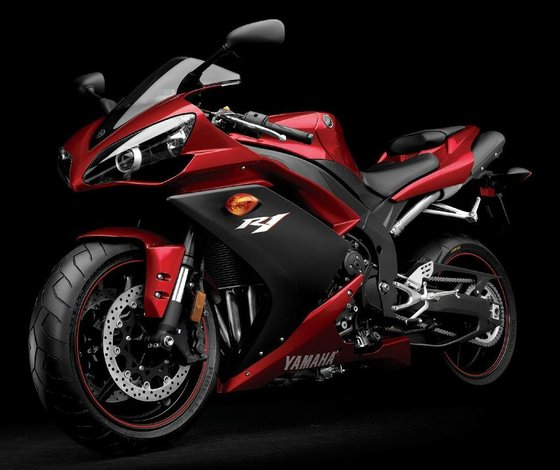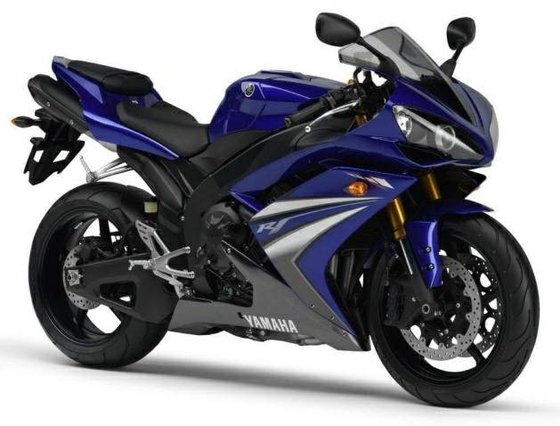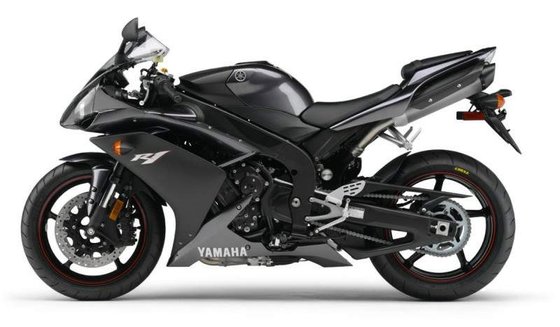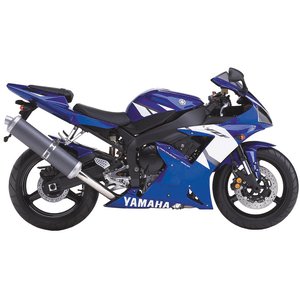Yamaha YZF-R1 (2007-2008): A Track Weapon with Street Smarts

When Yamaha unveiled the 2007 YZF-R1, it wasn’t just another iteration of their flagship sportbike—it was a revolution. Representing the fifth generation of the R1 lineage, this model marked a bold departure from tradition while doubling down on the raw, unapologetic performance that made the R1 a legend. Built for riders who demand precision but refuse to compromise on adrenaline, the 2007-2008 R1 remains a benchmark in the liter-class category. Let’s dissect why this machine still commands respect among riders and collectors alike.
Engine Performance: The Heart of a Predator
Goodbye Five-Valve, Hello Brutal Efficiency
Yamaha’s decision to abandon its iconic five-valve-per-cylinder design in favor of a conventional four-valve setup raised eyebrows. Yet, the results spoke louder than nostalgia. The new 998cc inline-four engine featured two massive 31mm titanium intake valves (the largest in its class) and 25mm steel exhaust valves, paired with a higher compression ratio (12.7:1). This overhaul wasn’t just about power—it was about broadening the torque curve.
The real magic, however, lay in Yamaha Chip Controlled Intake (YCC-I), a first for production motorcycles. At lower RPMs, intake trumpets extended to 140mm for robust midrange grunt. Beyond 10,400 RPM, they shortened to 65mm, unleashing a ferocious top-end rush. Combined with YCC-T fly-by-wire throttle (responsive to inputs 1,000 times per second), the R1 delivered a claimed 180 HP (132.4 kW) at 12,500 RPM and 112.7 Nm (83.1 lb-ft) of torque. Dyno tests revealed a rear-wheel output of ~155 HP, but the real story was its linearity—no more “peaky” powerband of earlier models.
Track-Ready Refinements
- Slipper Clutch: Standard equipment for 2007, minimizing rear-wheel hop during aggressive downshifts.
- Titanium Exhaust: Dual underseat mufflers saved weight and met Euro 3/EPA emissions, though they cooked riders’ backsides in traffic.
- Gearing: Tall ratios let first gear stretch to ~160 km/h (99 mph), ideal for Laguna Seca’s front straight but requiring careful shifts in tight corners.

Handling: Surgical Precision Meets Forgiveness
Chassis Dynamics
The Deltabox V aluminum frame retained its twin-spar design but introduced strategic flex. Cast sections near the steering head were stiffened, while extruded portions allowed controlled flex for feedback. Paired with a swingarm 30% torsionally rigid yet laterally softer, the R1 carved corners with telepathic agility. Geometry stayed consistent: 24° rake, 102mm trail, and a 1,415mm wheelbase (55.7 inches).
Suspension & Brakes
- Front: 43mm inverted KYB forks with adjustable preload, compression, and rebound damping. Larger 24mm pistons reduced cavitation.
- Rear: SOQI shock with separate high/low-speed compression adjustment, tuned for plush small-bump compliance and track-day stiffness.
- Brakes: Radial-mount six-piston calipers gripped 310mm discs, offering progressive bite. While not as razor-sharp as Brembos, they inspired confidence under heavy trail braking.
Tires & Weight
Shod with Pirelli Diablo Corsas (120/70-ZR17 front, 190/50-ZR17 rear), the R1 struck a balance between grip and longevity. At 177 kg dry (390 lbs), it wasn’t the lightest in its class, but mass centralization masked the numbers.
Design: Function Over Flash (But Plenty of Flash)

The 2007 R1 borrowed styling cues from its younger sibling, the R6, with sharper lines and layered fairings that channeled airflow away from the rider. Aerodynamics improved, but the real head-turner was the dual-projector headlights and minimalist tail section. Instrumentation featured an analog tach with a digital speedo—functional, if not groundbreaking.
Color options included Yamaha Blue/White, Raven Black, and Candy Red. The 2008 10th Anniversary Edition added a limited-run Haga Replica livery, celebrating Noriyuki Haga’s WSBK exploits with a black/red scheme and numbered plaques (500 units globally).
Competition: How the R1 Stacks Up
Suzuki GSX-R1000 (2007-2008)
- Power: 185 HP, with a broader midrange.
- Handling: Lighter feel but less stability at extreme lean angles.
- Verdict: The GSX-R was a torque monster, but the R1’s chassis and electronics gave it an edge on technical circuits.
Honda CBR1000RR (2007-2008)
- Power: 175 HP, smoother delivery.
- Handling: Neutral steering and forgiving ergonomics for street riders.
- Verdict: Better daily rider, but lacked the R1’s track-focused aggression.
Kawasaki Ninja ZX-10R (2007-2008)
- Power: 181 HP, brutal top-end.
- Handling: Twitchy at low speeds; demanded expert input.
- Verdict: A raw, unfiltered experience vs. the R1’s refined brutality.
Maintenance: Keeping the Beast Alive
Key Service Points
- Oil Changes: Use SAE 10W-40 synthetic (3.1L with filter). The K&N KN-303 filter is a popular upgrade.
- Valve Adjustments: Check every 42,000 km (26,000 miles). Intake clearance: 0.11–0.20mm, exhaust: 0.21–0.25mm (cold).
- Cooling System: Flush every 2 years with 2.76L of coolant. Watch for leaks near the YCC-I actuators.
- Brakes: Replace fluid annually with DOT 4. Swap pads to sintered compounds for track use.
- Chain: #530 O-ring chain with 116 links. Adjust slack to 25–35mm (1–1.4 inches).
Common Upgrades
- Exhaust: Replace the heavy stock system with a lightweight Akrapovič or Yoshimura slip-on.
- Suspension: Öhlins cartridges and TTX rear shock transform cornering stability.
- ECU Tuning: Unlock hidden midrange by disabling YCC-I restrictions (track use only).

Conclusion: The Last Analog Superbike?
The 2007-2008 Yamaha YZF-R1 straddled two eras: advanced enough to pioneer fly-by-wire tech, yet raw enough to demand skill from its rider. It rewarded those who mastered its quirks—the abrupt power surge past 8,000 RPM, the need to carry corner speed—and punished complacency. Today, it’s a testament to an era before traction control and ride modes diluted the thrill. For riders seeking a visceral connection to asphalt, this R1 isn’t just a motorcycle—it’s a time machine to the golden age of liter bikes.
Ready to elevate your R1? Explore our curated selection of performance parts at MOTOPARTS.store—because even legends deserve an upgrade.



















Specifications sheet
| Engine | |
|---|---|
| Stroke: | Four-stroke |
| Max power: | 132 kW | 177.0 hp |
| Max torque: | 113 Nm |
| Fuel system: | Fuel Injection with YCC-T and YCC-I |
| Max power @: | 12500 rpm |
| Displacement: | 998 ccm |
| Fuel control: | Double Overhead Cams/Twin Cam (DOHC) |
| Max torque @: | 10000 rpm |
| Configuration: | Inline |
| Cooling system: | Liquid |
| Compression ratio: | 12.7:1 |
| Number of cylinders: | 4 |
| Valves per cylinder: | 4 |
| Dimensions | |
|---|---|
| Wheelbase: | 1415 mm (55.7 in) |
| Dry weight: | 177 |
| Wet weight: | 190 |
| Seat height: | 835 mm (32.9 in) |
| Overall width: | 720 mm (28.3 in) |
| Overall height: | 1110 mm (43.7 in) |
| Overall length: | 2060 mm (81.1 in) |
| Ground clearance: | 135 mm (5.3 in) |
| Fuel tank capacity: | 18 L (4.75 US gal) |
| Drivetrain | |
|---|---|
| Chain size: | 530 |
| Chain links: | 118 |
| Final drive: | chain |
| Transmission: | 6-speed, cable-operated multiplate wet slipper clutch |
| Rear sprocket: | 45 |
| Front sprocket: | 17 |
| Maintenance | |
|---|---|
| Engine oil: | 10W40 |
| Idle speed: | 1200 ± 50 RPM |
| Brake fluid: | DOT 4 |
| Spark plugs: | NGK CR9EK |
| Spark plug gap: | 0.7 |
| Coolant capacity: | 2.76 |
| Engine oil capacity: | 3.1 |
| Chain lubrication interval: | Every 500-1000 km (or as needed) |
| Engine oil change interval: | Every 5000km or 2 years (recommended) |
| Valve clearance (intake, cold): | 0.11–0.20 mm |
| Valve clearance check interval: | 24,000 km / 15,000 mi |
| Valve clearance (exhaust, cold): | 0.21–0.25 mm |
| Recommended tire pressure (rear): | 2.9 bar (42 psi) |
| Recommended tire pressure (front): | 2.5 bar (36 psi) |
| Additional Notes | |
|---|---|
| Key Technologies: | YCC-T (Yamaha Chip Controlled Throttle), YCC-I (Variable Intake System) |
| Special Editions: | 2008 10th Anniversary Model (limited to 500 units) |
| Chassis and Suspension | |
|---|---|
| Frame: | Deltabox V aluminum twin-spar |
| Trail: | 102 mm (4.0 in) |
| Rear tire: | 190/50-z-17 |
| Front tire: | 120/70-z-17 |
| Rear brakes: | Single 220 mm disc, 1-piston caliper |
| Front brakes: | 2 x 310 mm discs, 6-piston radial calipers (ABS not mentioned) |
| Rear suspension: | Link-type monoshock w/piggyback reservoir, adjustable hi/lo-speed compression damping, rebound damping, spring preload |
| Front suspension: | 43mm inverted telescopic fork, adjustable preload, compression damping, rebound damping |
| Rake (fork angle): | 24° |
| Rear wheel travel: | 130 mm (5.1 in) |
| Front wheel travel: | 119 mm (4.7 in) |



















